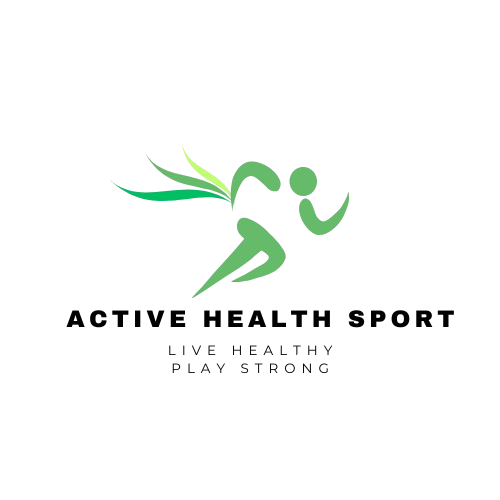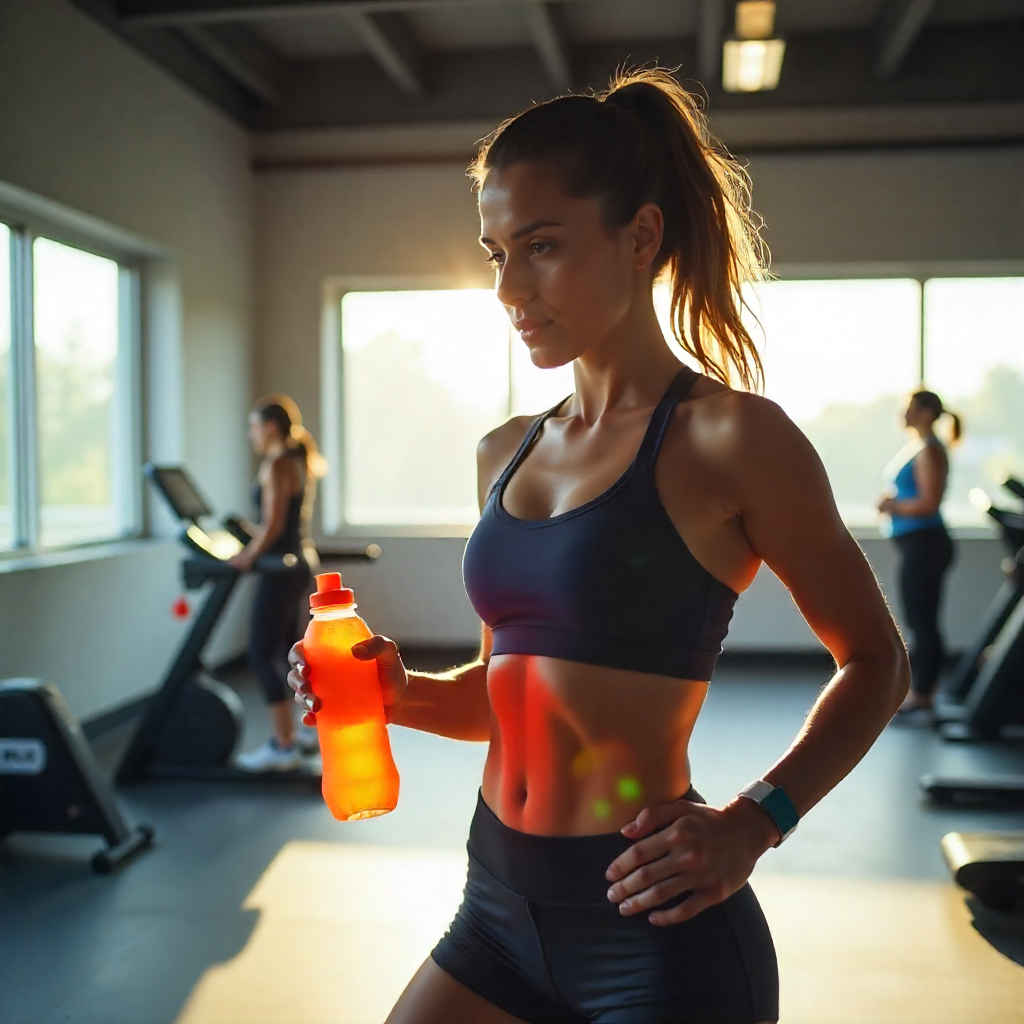Beyond Water, The Hidden Key to True Hydration
Most adults know the rule, “Drink more water.”
But few realize that hydration isn’t just about fluid intake. It’s about electrolyte balance, the invisible electrical system that keeps your muscles contracting, your heart beating, and your brain firing.
In late 2025, as more people adopt high-intensity workouts, hybrid work lifestyles, and energy-demanding routines, dehydration has evolved from a summer problem to a year-round performance barrier. Even if you’re drinking liters of water daily, you could still be functionally dehydrated if your body lacks the right electrolyte balance.
Electrolytes aren’t just for athletes or marathoners. They’re essential for anyone living an active, high-output lifestyle, whether you’re a fitness enthusiast, a parent juggling work and movement, or someone recovering from chronic fatigue.
In this blog, we’ll dive deep into what electrolytes really do, how water alone can fall short, and how to use electrolyte balance to enhance performance, recovery, and cognitive clarity in everyday life.
What Are Electrolytes, Really?
Electrolytes are charged minerals that dissolve in body fluids like blood, sweat, and urine. They conduct electricity, allowing your muscles, nerves, and cells to function properly.
The Key Players:
| Electrolyte | Primary Role |
| Sodium (Na⁺) | Regulates fluid balance and blood pressure |
| Potassium (K⁺) | Controls muscle contractions and nerve signals |
| Magnesium (Mg²⁺) | Supports energy production, recovery, and relaxation |
| Calcium (Ca²⁺) | Essential for bone health and muscle function |
| Chloride (Cl⁻) | Balances fluids and helps digestion |
| Phosphate (PO₄³⁻) | Aids in energy metabolism and cellular repair |
Electrolytes work together to keep your internal environment stable, a process known as homeostasis. When one goes off balance (usually sodium or potassium), your body starts sending warning signs: fatigue, brain fog, muscle cramps, dizziness, or heart palpitations.
Why Water Alone Isn’t Enough
Most people assume dehydration equals “not enough water.”
But in reality, drinking excessive plain water can actually dilute essential minerals, leading to hyponatremia (low sodium levels in the blood).
Here’s the science:
When you sweat, you lose both water and electrolytes, primarily sodium and chloride. If you only replace the water and not the minerals, your body’s electrical balance becomes disrupted. Cells start swelling, nerve impulses misfire, and muscle function drops.
Real-Life Example:
- After a 45-minute morning jog, you drink two large bottles of water.
- You feel bloated and lightheaded rather than refreshed.
- That’s not dehydration, that’s an electrolyte imbalance.
According to a 2024 European Journal of Sports Nutrition study, up to 62% of recreational athletes showed symptoms of sodium depletion after workouts, despite drinking adequate water.
Also Read the Latest: Daily Water Intake: What’s the Right Amount for You?
The Physiology of Hydration: How Electrolytes Power Your System
1. Cellular Hydration
Water follows salt. Sodium acts like a gatekeeper, pulling water into cells through osmosis. Without enough sodium, water remains in the bloodstream rather than entering cells, leading to “dry dehydration.” You drink water, but your tissues stay thirsty.
2. Muscle Function
Potassium and calcium regulate how muscles contract and relax.
When potassium levels drop, your muscles misfire, causing cramps, weakness, or twitching. That’s why electrolyte drinks often include potassium-rich salts.
3. Nervous System Communication
Every nerve signal in your body, from blinking your eyes to typing on a keyboard, depends on sodium-potassium electrical gradients.
An imbalance can cause fatigue, brain fog, or irritability.
4. pH and Acid-Base Balance
Electrolytes like bicarbonate and phosphate help buffer acids, maintaining the ideal blood pH (around 7.4). When electrolyte levels drop, your body becomes slightly more acidic, leading to inflammation and lower energy.
Signs You Need More Than Water
| Symptom | Likely Cause |
| Muscle cramps | Low magnesium or potassium |
| Fatigue or brain fog | Low sodium or dehydration |
| Headaches | Imbalance of sodium and water |
| Rapid heart rate | Electrolyte depletion post-exercise |
| Numbness or tingling | Magnesium or calcium deficiency |
| Dizziness after workouts | Sodium loss from sweating |
Pro Tip: If you crave salty foods after working out, your body is literally asking for sodium replenishment.
Also Read the Latest: Top Signs You’re Dehydrated and How to Fix It Quickly?
Functional Hydration: Balancing Electrolytes for Real-Life Energy
1. Start the Day With Minerals
After 7-8 hours of sleep, you wake up slightly dehydrated.
Adding a pinch of sea salt or electrolyte powder to your morning water restores sodium levels and kickstarts energy metabolism.
2. Hydrate During Workouts
For workouts longer than 45 minutes, plain water won’t cut it.
A 2:1 ratio of sodium to potassium helps maintain endurance and prevents cramps.
DIY Hydration Mix Example:
- 500 ml of water
- 1/4 tsp sea salt (sodium)
- 1/8 tsp cream of tartar (potassium)
- Squeeze of lemon (vitamin C + taste)
- 1 tsp honey (glucose for absorption boost)
3. Replenish Post-Workout
Magnesium and calcium are key for muscle relaxation and recovery.
Within 30 minutes of finishing your session, combine an electrolyte drink with a protein snack or smoothie.
4. Daily Maintenance for Desk Workers
Even without workouts, sitting for long periods leads to low circulation and poor water distribution.
Micro-doses of electrolytes (in infused water or mineral drops) can help sustain focus and prevent fatigue throughout the day.
Real-Life Case Studies: How Smart Hydration Transformed Energy and Recovery
Case Study 1: The Active Professional Who Beat Midday Fatigue
Profile: Anna M., 34, marketing executive, juggling long office hours and evening gym sessions.
Problem: Despite drinking around 3 liters of water daily, Anna constantly felt drained by 3 p.m., suffered frequent leg cramps, and relied on two cups of coffee to stay alert.
Discovery: She wasn’t low on water, she was low on electrolytes. Her high water intake without mineral balance diluted essential sodium and potassium levels, impairing muscle function and focus.
Solution: Following guidance inspired by Harvard Health’s hydration research, she introduced an electrolyte-rich drink mid-morning and another after her gym sessions.
Result: Within two weeks, Anna’s energy stabilized throughout the day, caffeine dependence dropped, and leg cramps disappeared. By month’s end, she reported “feeling alert, clear-headed, and stronger during workouts.”
Case Study 2: The Endurance Runner Who Solved Muscle Spasms
Profile: David L., 41, amateur half-marathoner training five days a week.
Problem: David battled recurring muscle spasms mid-race, even with consistent carb-loading and water intake. It was affecting his confidence and post-run recovery.
Intervention: After learning from ACE Fitness hydration guidelines, he adjusted his electrolyte balance using a sodium-potassium-magnesium blend before races and switched to electrolyte tablets mid-run.
Result: Over the next month, his endurance improved dramatically. He completed his next half-marathon 4% faster, reported zero cramping, and recovered within 24 hours. David’s new mantra: “Hydration isn’t about drinking more, it’s about drinking smarter.”
Also Read: Smart Hydration: Boost Brainpower and Performance
Case Study 3: The Remote Worker Who Regained Focus Through Hydration Balance
Profile: Adeel R., 29, software developer working from home for over 10 hours daily.
Problem: Despite drinking nearly 4 liters of plain water each day, Adeel experienced frequent brain fog, low motivation, and afternoon crashes.
Solution: After consulting wellness literature from the Cleveland Clinic, he replaced half his intake with mineralized water and added a pinch of sea salt electrolytes every morning.
Result: Within three weeks, Adeel reported sustained mental clarity, improved mood, and consistent focus during coding sprints. “I used to think dehydration only affected athletes, turns out it affects productivity, too,” he said.
Case Study 4: The Fitness Coach Who Rediscovered Performance Balance
Profile: Laura N., 37, personal trainer and group fitness instructor.
Problem: Constantly coaching multiple sessions daily, Laura experienced low energy and post-class fatigue, even while maintaining a clean diet.
Adjustment: She introduced coconut water-based recovery drinks after high-intensity sessions, following insights from the National Library of Medicine study on rehydration efficiency.
Outcome: Her recovery time shortened by nearly 30%, muscle soreness dropped, and she reported waking up “refreshed and ready to train again.”
Your Turn: Share Your Hydration Story with Active Health Sport
Have you experienced a transformation through smarter hydration, better recovery, or balanced nutrition? We’d love to hear from you! 💧
Your journey could inspire thousands of readers to take small steps toward lasting health and performance.
👉 Share your story with us at Active Health Sport, and you might be featured in our next wellness spotlight!
Also Read the Latest: What Happens to Muscle Recovery When You’re Dehydrated
The Science: Electrolytes and Cognitive Performance
Hydration doesn’t just affect muscles, it directly impacts brain function.
The human brain is 75% water, but neurons require electrical conductivity to communicate.
Electrolyte depletion slows synaptic signaling, leading to decreased concentration, slower memory recall, and mental fatigue.
A 2025 Stanford NeuroPerformance Lab study found that individuals with optimal sodium-potassium balance scored 21% higher in cognitive endurance tests than those hydrated with water alone.
In another 2024 Sleep and Recovery Journal report, evening magnesium supplementation improved deep-sleep duration by 17%, demonstrating how electrolyte balance extends into restorative recovery.
How Climate, Diet, and Lifestyle Affect Electrolyte Needs
- Hot or Humid Climates:
Sweat losses are higher, requiring more sodium and potassium replenishment. - Low-Carb or Keto Diets:
Insulin drops, leading to increased sodium excretion. Electrolyte support becomes critical to avoid fatigue. - Stress and Caffeine:
Both act as mild diuretics, accelerating electrolyte loss through urine. - Processed Foods vs Whole Foods:
Ironically, processed foods have too much sodium but too little potassium and magnesium.
True electrolyte balance means more leafy greens, avocados, nuts, and seeds, not more salt.
Smart Electrolyte Strategy for 2025
| When | What to Do | Why It Works |
| Morning (7–9 AM) | Electrolyte-infused water or mineral drops | Restores overnight losses and boosts focus |
| Pre-Workout | Salt + water (sodium load) | Prepares cells for sweat loss |
| During Workout | Electrolyte drink every 30–45 minutes | Maintains endurance and muscle control |
| Post-Workout | Magnesium + potassium drink | Enhances recovery and relaxation |
| Evening (1 hr before bed) | Magnesium-based electrolyte or mineral water | Promotes calmness and better sleep |
Electrolyte Myths Debunked
Myth 1: “Only athletes need electrolytes.”
→ False. Even desk workers lose electrolytes through breathing, sweating, and urination daily.
Myth 2: “Drinking more water equals better hydration.”
→ Not always. Overhydration without minerals can cause fatigue and confusion.
Myth 3: “Sports drinks are the best source.”
→ Most are loaded with sugar and artificial dyes. DIY or natural blends work better.
Myth 4: “Salt is bad for health.”
→ Context matters. Excess processed sodium is harmful, but balanced natural salt (like sea salt) is essential for hydration.
Electrolyte-Rich Foods to Include Daily
- Sodium: Himalayan salt, olives, broth, pickles
- Potassium: Avocado, banana, sweet potato, spinach
- Magnesium: Pumpkin seeds, almonds, dark chocolate
- Calcium: Yogurt, chia seeds, leafy greens
- Chloride: Seaweed, tomatoes
- Phosphate: Fish, nuts, eggs
Read More On This: Here’s Why Water-Rich Fruits Are Essential for Hydration
Hydration Tech in 2025: Smarter Tracking
Modern wearables now measure sweat composition and electrolyte depletion in real-time.
Devices from WHOOP, Garmin, and Apple Health (2025 update) integrate hydration reminders based on temperature, activity level, and heart-rate variability (HRV).
AI-based hydration trackers even adjust your electrolyte-to-water ratio dynamically, predicting when an imbalance may occur before symptoms appear.
Final Thoughts: Balance Is the Future of Hydration
Water sustains life, but electrolytes sustain performance.
They bridge the gap between hydration, energy, and recovery, turning plain water into a vehicle for real vitality.
In late 2025’s fast-paced, multitasking world, hydration isn’t about volume, it’s about intelligent balance. Whether you’re working at a desk, training for a marathon, or simply trying to feel more alive through the day, understanding your electrolytes means understanding your body’s electrical language.
Because sometimes, it’s not more water you need, it’s more balance.
FAQs
What are electrolytes and why are they important for active adults?
Electrolytes are minerals such as sodium, potassium, magnesium, and calcium that regulate hydration, muscle function, and nerve signaling. Active adults lose them through sweat, so replenishing helps prevent fatigue, cramps, and dizziness.
How do I know if I’m low on electrolytes?
Early signs of electrolyte imbalance include muscle cramps, headaches, fatigue, and dizziness. Severe cases may lead to irregular heartbeat or confusion. Tracking hydration habits and sweat rate can help identify deficiencies early.
Can drinking more water help replace electrolytes?
No. Drinking excessive water without replacing lost minerals can dilute sodium levels, causing hyponatremia. Balance your intake with natural sources like coconut water, bananas, or electrolyte drinks after intense activity.
What’s the best way to restore electrolytes naturally?
You can restore electrolytes by eating mineral-rich foods such as spinach, avocados, oranges, and nuts. For athletes or active adults, low-sugar electrolyte powders or tablets can support rapid hydration recovery.
How much electrolyte intake is ideal per day for active adults?
Most adults need around 1,500–2,300 mg of sodium, 3,500 mg of potassium, and smaller amounts of magnesium and calcium daily. Exact needs depend on sweat rate, exercise intensity, and climate conditions.
Can electrolyte balance improve mental clarity and energy?
Yes. Proper electrolyte balance supports brain signaling and oxygen flow, enhancing alertness and reducing fatigue. Studies show hydrated cells maintain sharper focus and quicker reaction times during both work and workouts.
You might also like the following…

Kait Amazra is the founder and lead writer of Active Health Sport. With over 25 years of experience in health, fitness, and wellness education, Kait combines professional expertise with a passion for helping people live stronger, healthier, and more balanced lives.
As a licensed health and fitness professional, Kait has worked alongside industry experts to deliver evidence-based insights on physical activity, nutrition, recovery, and holistic well-being. Through Active Health Sport, Kait’s mission is to make trusted, practical, and science-backed health information accessible to everyone, from beginners building new habits to athletes seeking peak performance.



